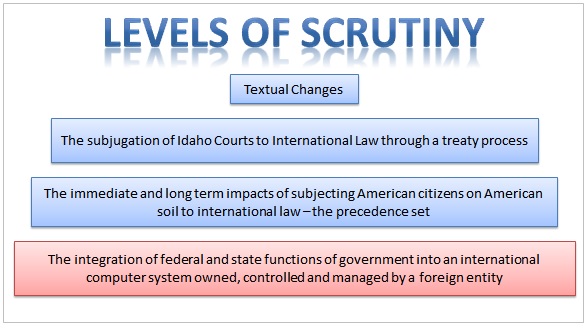

Croson Company (1988), the Court found that Richmond “failed to demonstrate a compelling governmental interest” to justify its requirement that 30 percent of city construction contracts go to minority-owned businesses. “There is patently no legitimate overriding purpose independent of invidious racial discrimination which justifies this classification,” Chief Justice Earl Warren wrote in the opinion. Virginia (1967), the Supreme Court rejected Virginia’s argument that its ban on interracial marriage served a compelling state interest. It should be difficult to show that you have a compelling interest in treating individuals differently on the basis of race. He’s right: Most discriminatory policies and laws don’t survive under strict scrutiny. “Strict scrutiny leaves few survivors,” Justice David Souter once noted in a dissent. Harvard is not a public institution, but because it accepts federal funding, its policies are subject to the same strict scrutiny standard as government policies. To pass muster under strict scrutiny, a policy must further a “compelling interest” and be narrowly tailored to that interest. Strict scrutiny is a legal test that’s applied to any government violation of the Equal Protection Clause that involves race.

”īut the petitioners are simply asking Harvard to meet the same standard that all racially discriminatory laws must meet: the standard of strict scrutiny. Some have slammed Students for Fair Admissions for adding to the Supreme Court’s “ culture war docket. This is a controversial case: Supporters of affirmative action say Harvard’s race-conscious admissions process is necessary to meet the school’s diversity, equity, and inclusion goals. Pacific Legal Foundation filed an amicus brief in support of the petitioners. Harvard’s attorneys will soon be trying to answer that question in front of the Supreme Court: The Court just granted cert in Students for Fair Admissions v. Kurtzman, and Lochner v.The students suing Harvard over its race-conscious admissions process are asking a simple question: What is Harvard’s compelling interest in discriminating against Asian Americans? Articulate the importance of key cases such as Brown v. Illustrate compromises found in the Constitution by citing examples and historic background Describe the individual liberties protected by the Constitution and account for the history and structure of their protection Join me as we look at the questions both raised and answered by the Constitution and those that interpret it!īy the end of this course, you should be able to: In our final two lectures, we'll take a close look at what is probably the most famous amendment to the Constitution, the First Amendment. We'll examine when the government can permissibly treat people unequally and when it can't. We'll then examine the circumstances under which, various rights and liberties can be regulated by the federal, state, and local government. We'll begin by examining the structure of the Constitution's protection of individual rights. In this course we will investigate the protection of individual rights and liberties and take a look at what rights are and are not protected and investigate several important shifts in jurisprudence. You'll learn the history behind the Constitution, cases that formed important precedent, and how changes in interpretation have been dependent on shifts in cultural and political climate as well as the composition of the Supreme Court. Constitution through the centuries with an emphasis on protections of individual liberties and the evolution of equal protection.

Chemerinsky on Constitutional Law: Individual Rights and Liberties will highlight the construction and interpretation of the U.S.


 0 kommentar(er)
0 kommentar(er)
